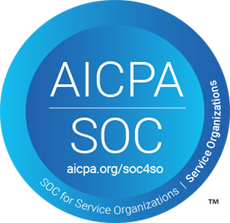If you look at some of the recent articles about the state of healthcare, it’s enough to make you panic. Things are already pretty bleak, but the prognosis is even bleaker. The impact of COVID-19 not only dealt a painful blow to the whole healthcare industry, but it was the second half of the one-two punch already felt under the stress of an aging population. Provider and staff burnout, high turnover rates, competing markets for staffing, inflation, and supply-and-demand challenges are just some of the many variables impacting the bottom line of hospitals and health systems, the symptoms of which are long wait times, fewer services available, and more difficulty providing care to the sickest and furthest from the nexus of the physical health system. But here’s where we pivot from Doomsday and look at the opportunities laying right under our collective noses: the healthcare communication infrastructure. While it’s no surprise that some healthcare IT efforts stalled (if not suffered an untimely death) during the pandemic, the crisis state of the future of healthcare delivery is a prudent reminder to revisit expensive, complex interoperability projects and consider what is already in place to work with…starting today.

Connecting Providers for Effortless Communication Matters
The idea that providers across the care continuum can easily and openly communicate simply because we are in an era of maximum technology is so very false. (Sorry to burst that bubble.) In fact, the breakdown in communication is not only part of what makes the job so exhausting and cumbersome, but an article published by the Healthcare Financial Management Association brought to light the very sobering concerns of many healthcare professionals that that desperation and disjointedness of the state of healthcare communication during COVID resulted in less secure exchange of PHI.
What does this have to do with provider burnout? Everything.
Imagine being responsible for a life. Not only is there the practical liability involved with being a physician, but there is the personal investment in seeing patients thrive and well. The sheer volume of patients requiring care these days, coupled with folks being sicker than ever, working with fewer resources and supplies, and feeling mounting pressure from hospital administrators in the wake of steadily plummeting margins…if your blood pressure isn’t raised at the thought of all of these risk factors at play, then you’re not paying attention.
The inability to collaborate with providers across the patient’s care team to effectively and proactively manage patients has everything to do with getting out from behind the eight ball. So much of our current ability to deliver care is reactive, and the frank truth is that we can’t keep up. Obviously. Eight-hour waits at the ED, closing rural clinics, admitted patients getting treated in the ER due to lack of capacity…we’re not thriving folks.
Coordinated, Connected Care Communities for The Win!
We need each other more than ever. Hospital-based providers must be able to tap into community and home-based providers to extend their capacity to manage care, reduce readmission, and have a fighting chance to keep patients well enough to create space in the ED for actual emergencies. We’ve shared before how improving connectivity to Home Health Providers not only boosts morale for patients and providers, but it actually cuts costs. And while hospitals and health systems are often purring along on well-established EHR ecosystems, the other vital providers functioning in their orbits are not. This is where wisely leveraging simple, quickly-implemented solutions can level up the whole experience, from optimized referral management to better patient compliance with Physical Therapy.
There is a ton of healthcare communication infrastructure already in place, much of it centering around the hospitals and health systems at Ground Zero of this industry crisis. Instead of looking toward more expensive, lengthy implementations to close the gap between providers, we do far better by leveraging what is already in place, and in many cases…just turning it on. Communities may be a few configurations and tweaks away from reducing risk and lowering the collective blood pressure of the care community. Because where information and connectivity is powerful, collaboration and teamwork are truly transformational.







